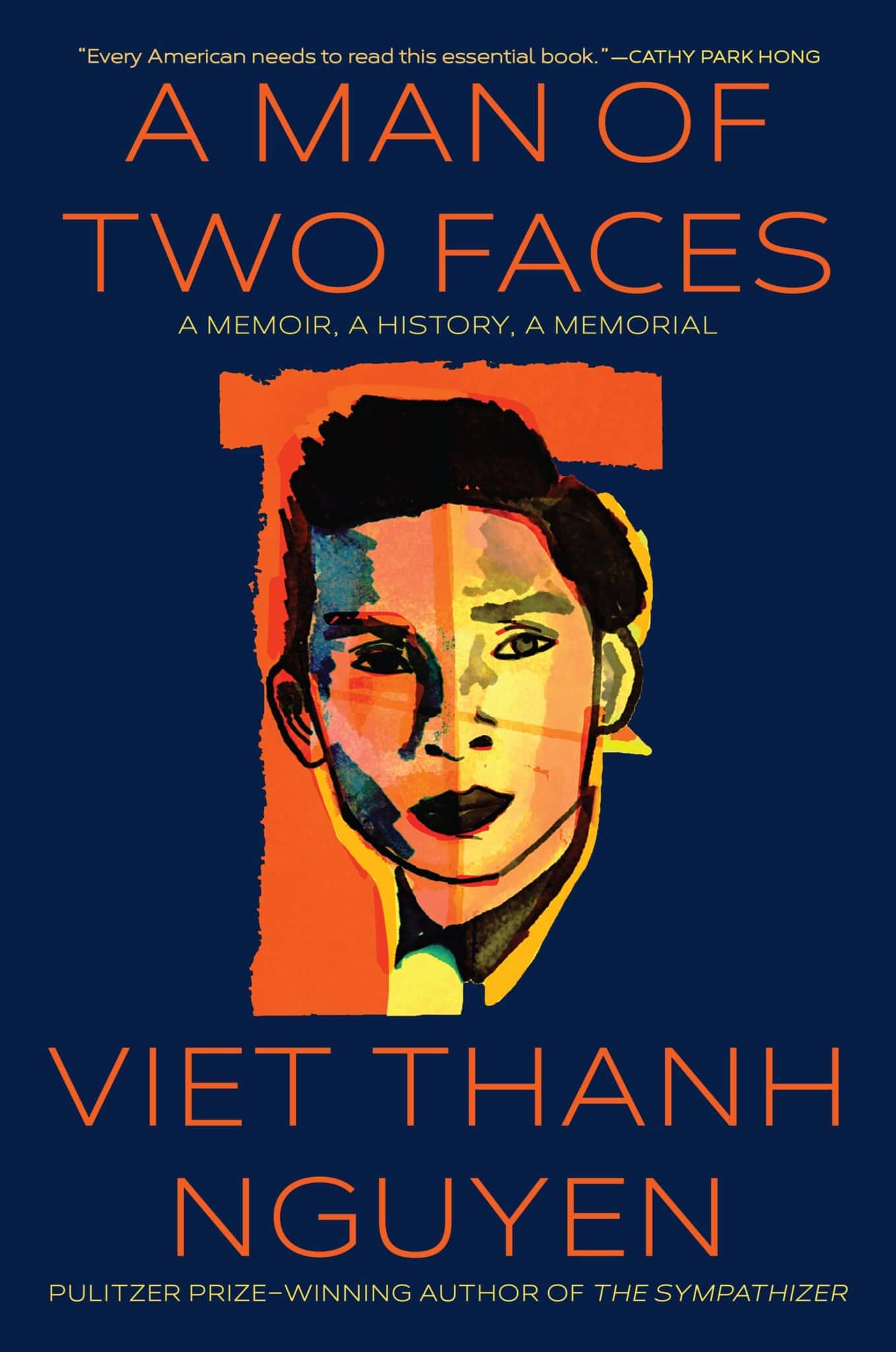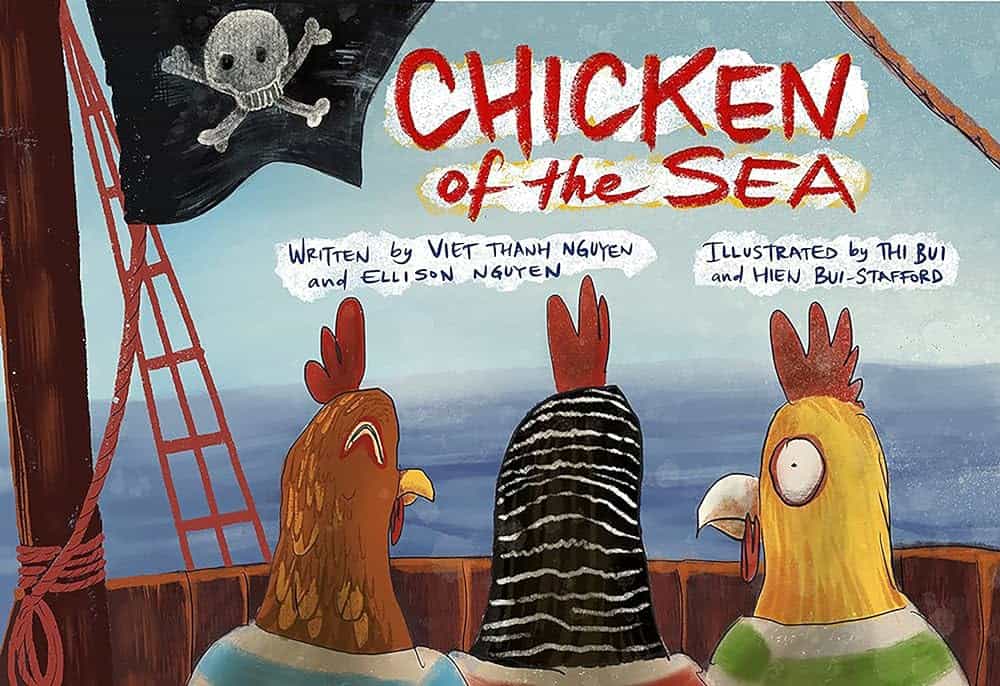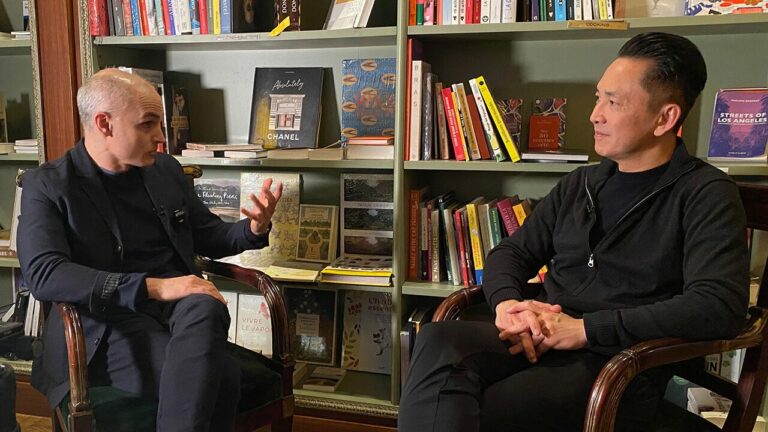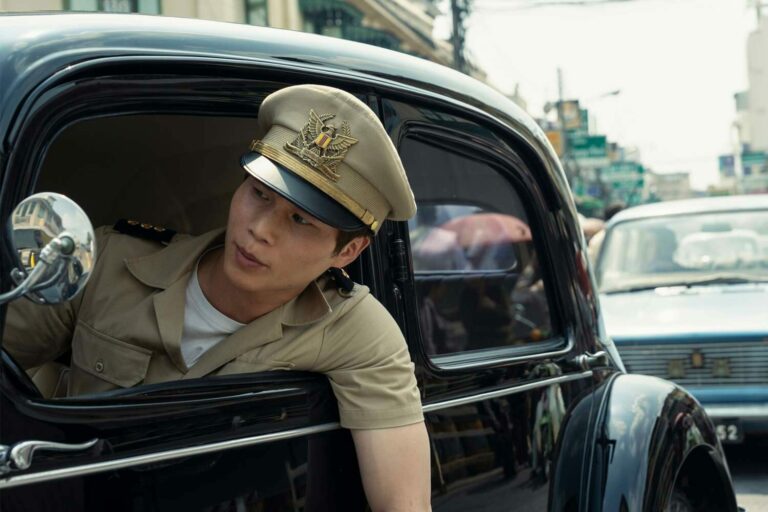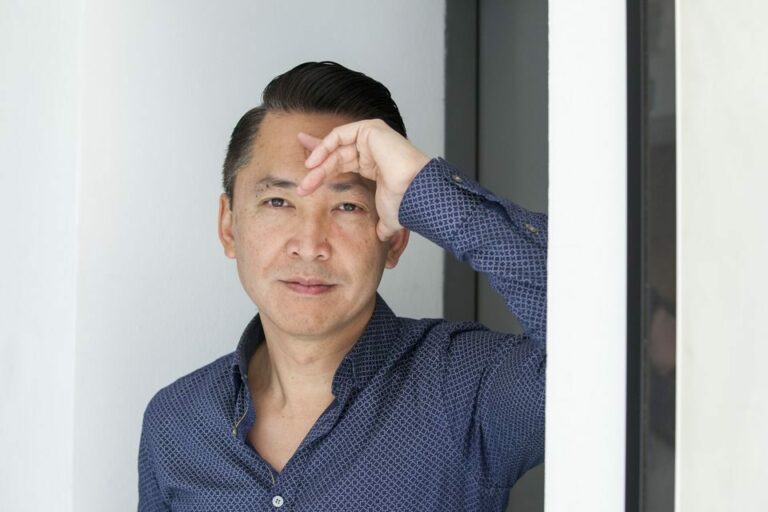In his memoir, Nguyen holds up the mirror to himself, his refugee identity, and how the American Dream™ is just a euphemism for settler colonialism—Samantha Pak talks to Viet Thanh Thanh Nguyen for Joysauce
Viet Thanh Nguyen never set out to write a memoir—not only was he reluctant to dig into the difficult parts of his life, he also always felt his life was too boring. But after an emotional moment on stage in 2017, the Los Angeles-based novelist realized it was time for him to go there.
The result of that digging is A Man of Two Faces: A Memoir, A History, A Memorial. The memoir was released last month and tells the story of Nguyen and his family as they fled Vietnam for the United States and started a new life for themselves in suburban San Jose, California.
Nguyen, whose debut novel The Sympathizer received the Pulitzer Prize for fiction, is currently on tour promoting the book around the country, with his final leg on the West Coast next week.
I recently spoke with the 52-year-old, and we connected over our mutual experiences as Southeast Asian Americans, particularly as we discovered that his family was very likely at Fort Indiantown Gap—a camp in Pennsylvania that housed 22,000 refugees from Vietnam and Cambodia following the Vietnam War—at the same time as my father. We also touched on how our individual lives are shaped by larger political forces, and how the Vietnam War is a misnomer because it “totally obscures what happened to Laotians, Cambodians and Hmongs in Southeast Asia.”
This interview has been edited for length and clarity.
Samantha Pak: A Man of Two Faces is the story of you and your family coming to the U.S. Where did the idea come from to tell that story? Because it’s not an easy story.
Viet Thanh Nguyen: I was touring the country, giving a lot of lectures ever since the Pulitzer Prize, and I was talking about issues of Asian Americans, race, the history of the country, refugees, war. As I was delivering these lectures, I was also delivering a story—about myself, my family, how we came here as refugees.
In front of an audience of many hundreds of people, talking about my parents’ grocery store, the SaiGon Moi, and about what my parents went through there, I just found myself overwhelmed with emotion on stage and couldn’t continue for a little bit. That never happens to me. And so I thought, “Oh, this means something. Why does the past matter in a way that I hadn’t expected?”
SP: When did you have that reaction? And how long was the process to write the book?
VTN: It was 2017. At the time, I was still in the middle of writing my novel The Committed, so when I finished that, around 2020, I set off to write this book.
Writing the first two-thirds of the book was a blast. It was really easy. And I think readers will hopefully have fun too. But the last third of the book deals with my mother’s trips to the psychiatric hospital, and her incapacitation for the last 13 years of her life. I had written about it when I was 19 for (novelist) Maxine Hong Kingston and then put it aside. It took 30 years to develop the art and the emotional capacity to confront this most terrifying of stories.
It took 30 years to develop the art and the emotional capacity to confront this most terrifying of stories.
SP: You mentioned in the book, the difference between an immigrant and a refugee: Immigrants come by choice. Refugees don’t. Why was it important to say, “I am a refugee,” versus “I am an immigrant?”
VTN: I am no longer a refugee, but I was, in fact, a refugee when I came to this country. Not an immigrant. I want to claim that identity and that history, not simply as a matter of pride, or as a matter of solidarity with other refugees now—although that is important. So many refugees who come to the United States are not displaced simply by some magical accident, but are created out of American foreign policy, whether it’s the interventions in other countries in various ways or actual wars. Refugees are in this country, refugees have been rescued by the United States, oftentimes because the United States invaded their countries in the first place.
SP: The first two parts of the book, you write in the second person point of view, using “you” instead of “I.” Can you explain why?
VTN: If we look deep enough under the hood into our souls, we might be terrified to see what we find. So to write the memoir, I had to create a little bit of distance with myself. Writing the book purely from the first person perspective, would have been too intimate. But if I address myself, as “you,” I gain some distance and I could observe myself and see myself. This is an acknowledgement of the title of the book, A Man of Two Faces, because it’s also an exploration of my own duality as someone who has at least a couple of different faces.
The “you” and the “I” is also really symbolic of an investigation of the two faces of the country: the Quiet American and the Ugly American. The ideals of the country, versus the brutality of the history of the country. It’s something Americans are cognizant of, but many are uncomfortable in terms of addressing.
SP: A lot of Southeast Asians have an idea of what happened to our families, but not a lot of people talk about it. Do you think that’s common among Vietnamese families and their stories of when they came over here?
VTN: I think it was very common. For the people who actually witnessed war, genocide, catastrophe, and so on, they were deeply traumatized. There’s no surprise that a lot of them don’t want to talk about it. Partly because maybe they don’t want to relive these things, but also maybe partly because they want to protect their children.
Because people can’t talk about these things, the past manifests itself in other kinds of disruptive ways. And the mystery is what is unique to us as individuals and families, which would have happened anyway, and what is the result of history?
My mother went to the psychiatric hospital three times. Was that simply because of something individual to her? Or was that because she lived through 40 years and more of wars, refugee displacements, famine, loss, suffering?
SP: In the book, you talk about your adopted sister who was left behind. What was it like to go back to Vietnam and re-meet her?
VTN: It was a challenging experience for me. Her fate in particular struck me because I understood, intuitively, that I was very lucky. I was brought to this country. I was taken with my parents, but not her. Why not? Most of my extended family had never left (Vietnam). And to meet my sister would be to directly confront the circumstances of history. That’s what it’s like to meet someone who’s been left behind. That was emotionally difficult. And I’m not good with emotional difficulty (laughs).
SP: Do you ever think about your life if your family was able to stay in Vietnam?
VTN: What probably would have happened is that I wouldn’t be a writer. I wouldn’t have had the opportunity, the education, or even if I had the education, the possibility of writing the kinds of stories that I write. Even to this day, much of my writing is not allowed to be published in Vietnam.
But the “what if” question is not purely a personal question. It is also a political question. What if France hadn’t colonized Indochina? What if France hadn’t decided to leave in 1945? What if the United States hadn’t taken over from France in Vietnam, Laos, and Cambodia? And what if Ho Chi Minh had done something else? The book is also very much about how all of our lives have been shaped by these choices that colonizing powers and revolutionary movements have made.
SP: It sounds like you’ve got your son following in your footsteps because I know you guys have written a book together, as well. What was it like to do this project with your son?
VTN: It was completely joyful. I’ve become a father twice and I have to say, it’s pretty good. I’ve discovered a new capacity for love for another person and have been able to discover the joys of childhood through my children. And one of those joys is creativity.
It was completely his idea when I took him to a writer’s residency with me. He met some of his favorite artists and writers, Thi Bui and Bao Phi, who had done a book called A Different Pond. He was completely inspired by that to do his own comic book. It was called Chicken of the Sea, about chickens who run off to the sea to become pirates. I approached Thi Bui to illustrate. She said, “I’m too busy,” but she has a very talented son (Hien Bui-Stafford) who was, I think, probably 12 at the time—
SP: How old was your son at the time?
VTN: He was 5. Hien did the illustrations and drawings, and then Thi colorized. It was a two parent-child collaboration. It’s completely fun.
SP: And you said your second child is 3?
VTN: Three, and in fact, I have a second children’s book coming out in May, titled Simone, and that’s my daughter’s name. It’s about a Vietnamese American girl who is confronted by wildfires. The idea came from the artist, Minnie Phan. I wrote the story and then she illustrated. It’s fantastically beautiful. Our editor said, “Hey, why don’t we call it Simone?” It wasn’t even my choice. So even though we didn’t collaborate, my daughter, her spirit is in the book. Super thrilled about that book coming out. It will be a good surprise for her.
SP: You talked about the difficult parts in writing (A Man of Two Faces). What were some of your favorite parts to write?
VTN: There was so much fun in writing this book. For example, I had a lot of fun writing this section where all I do is quote, one-star reviews of The Sympathizer. I thought that was hilarious. I tell the entire plot of The Sympathizer through these one-star reviews. I’m so glad I upset all these people.
And there was a lot of fun talking about the immigrant and the refugee experience because in some ways, these immigrant and refugee stories are oftentimes quite sad, but they’re also sometimes really absurd, and in the absurdity we can find humor. For example, refugees and immigrants beg to get into this country. And then once they get into this country, a certain percentage of those refugees and immigrants will say, “Fuck you, immigrants and refugees! No more!” That’s absurd!
SP: There are more stories coming out from the Southeast Asian perspective. And what I appreciate is the second generation of Southeast Asians, we’re starting to write the “after,” of what’s happening now within these communities. It’s not all trauma porn.
VTN: One of the challenges for us is, as writers of color, we know white people want the trauma porn. That’s what’s published. And yet, at the same time, we can’t really refuse that because then it means that we don’t talk about the real pain and stories. And so part of the challenge is, “How do we write about the pain and the trauma and not do trauma porn?”
The way I dealt with it in the book is to resist this idea that our trauma and our pain is purely individualized. Trauma has been historically produced in ways in which the reader is implicated. The book holds up a mirror to Americans and to the American dream. And the book says the American Dream is just a euphemism for settler colonialism.
SP: I like the “American Dream™”—the trademark you have in the book. The American Dream is a very white concept.
VTN: I want to unsettle American readers. Certainly white readers, but I don’t think this is just white readers. A lot of immigrants, refugees, people of color, buy into the American Dream, because that’s how they get by. It’s a euphemism for settler colonialism. It is the function of the immigrant or the refugee to serve as the alibi to deny settler colonialism and focus on the American Dream. So there’s huge incentives for non-white people to unironically, or even ironically, embrace the American Dream. As long as you agree to the American Dream, “America™” has won.
The book tries to point that out and hopefully makes it impossible for readers to read this book and consign it to trauma porn or consign it to the narrative of the American Dream.
